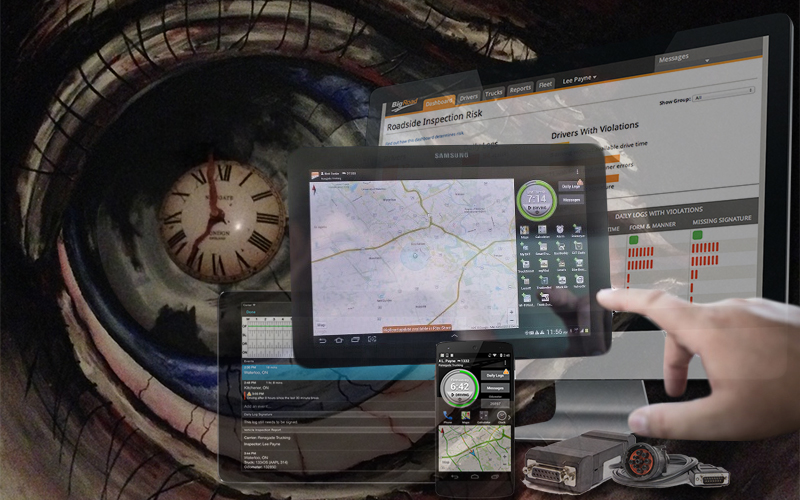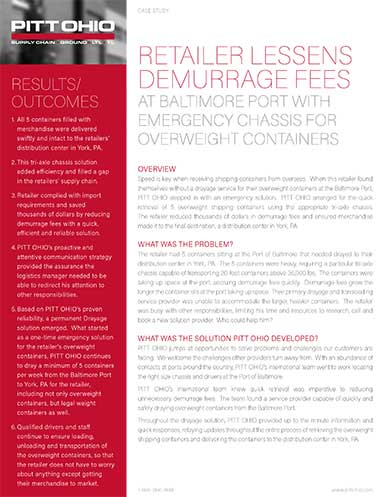Electronic Logging Devices Mandate Requires Close Attention Ahead of Final Deadline

Time needs to be spent wisely in order to keep up with changing market conditions and an ever-high commitment to service quality, two things which always require watchful eyes.
When the Federal Motor Carrier Safety Administration (FMCSA) formally announced late last year that the federal mandate for electronic logging devices (ELD) for commercial motor carriers was official and would take effect in December 2017, it basically confirmed the inevitable in some ways within the freight transportation and logistics sectors.
In one way, it had been discussed and broached by government, shipper, carrier, and supply chain and logistics concerns for so long that it really seemed like a done deal before it actually became one.
And on another front, supply chain stakeholders of all kinds have been positing on the rule’s potential impact on things like capacity, rates, and service for a long while, too.
The objective of the rule, according to FMCSA, is to strengthen commercial truck and bus drivers’ compliance with hours-of-service (HOS) regulations that combat fatigue.
The rule will take full effect on December 10, 2017, two years after the date of the final rule being issued. ELDs automatically record driving time and monitor engine hours, vehicle movement, miles driven, and location information.
As previously reported, many trucking observers maintain that the need for ELDs is obvious, with most explaining that the industry has been reliant on paper logs for far too long. And there could likely be economic benefits through ELD usage, as observers say it could likely reduce the effective number of miles a driver could log, further tightening trucking capacity at a time of ongoing limited truck driver supply, rising pay, and higher overall fleet costs.
Mike Regan, chief relationship officer at TranzAct Technologies, said that the impact of the rule on truckload capacity is still to be determined, given the two-year implementation period.
“There are those that say this is actually a good thing for capacity, because many large carrier are already using ELDs are going to be able to determine where their trucks are,” he said.
“In the quest for the ‘Uberization’ of trucks, this rule may be something that facilitates that push. But the real wildcard is that nobody knows just how much capacity is running illegally right now, so you can speculate on that. Some large carriers already using them say it has reduced their capacity by 3-to-5 percent.”
This sentiment by such a respected figure in the trucking industry highlights how even though the ELD mandate does not take effect for nearly two years, it remains top of mind from regulatory and operational perspective.
That was evident in a research note from Thom Albrecht, BB&T Capital Markets analyst, which reviewed his firm’s recent industry conference.
Albrecht wrote that the conference’s ELD session generated significant discussion, with numerous shippers explaining “they have clearly underestimated the challenge and impact of ELD,” with the five shippers on the panel saying they expect all of their core carriers to be 100 percent ELD-compliant by the first quarter of 2017 or basically a year ahead of the deadline.
What’s more, Albrecht cited Knight Transportation as saying that its weekly miles per truck are down 15 percent in a decade, despite a similar length of haul, due to ELD and HOS, too. And he also noted that several shippers mentioned that they have not vetted their lanes for ELD vulnerability as much as they should in terms of if the length of hauls are still possible for fully compliant ELD carriers.
December 2017 is still a while off, but time moves quickly and this mandate will be going live sooner than you think.
And from a shipper’s perspective, that does not leave much time to get tings to where they really need to be in order for ELD to truly be an asset and augment operations and efficiency.
“The ELD rule will most certainly improve, in the long-run, the efficiencies within the management of the HOS for both the operators and the government agencies,” stated Jeff Brady, Director of Transportation & Logistics for Harry & David, a multi-channel specialty retailer and producer of branded premium gift-quality fruit, gourmet food products and other gifts.
“However, in the meantime, to get compliant the operators will look to offset a massive CapEx spend by surely increasing rates. This, coupled with the already tight marketplace, will create issues for shippers.”
That does not translated into an ideal situation, but Brady was not done, explaining that with some requirements still necessary to hold onto paper, ELD does not get us to a paperless and all-technology solution.
“This still leaves holes on 100 percent accurate record keeping and carriers migrate to a technology solution and re-train drivers there will be a reduction in capacity due to inefficiencies and/or based on carriers becoming truly compliant with logging all events and time on and off,” he said.
“None of these are deal breakers and I am all for things that create safety on the highways. But, like usual, the governmental solutions are ripe with pitfalls and over simplification in terms of implementation and a holistic view of the ramifications of new rules and enforcement.”
Based on that, it is safe to say there will be more thoughts, analysis, and insight on ELD in the coming months. While it is fair to say there may be some growing pains on both shipper and carrier sides, it stands to reason that time needs to be spent wisely in order to keep up with changing market conditions and an ever-high commitment to service quality, two things which always require watchful eyes.
Images: Lleon Taylor-Barrow and BigRoad
Related: Trucking Companies Applaud Move Away From Paper Log Books Into Electronic Logging Devices

Article Topics
PITT OHIO News & Resources
1-2 Day Reliable Delivery Service Adds Value to Customer’s Overall Offering 6 Reasons Shippers Diversify Their Portfolio of Drayage Providers PITT OHIO heralds new next-day lanes into New England PITT OHIO Wins 2023 Penske Logistics Freight Management Carrier Award Scope 3 Emissions from Freight Transportation Warehouse Solutions for a Variety of Industries PITT OHIO Receives 2nd Supply Chain Sustainability Award More PITT OHIOLatest in Transportation
Ask an Expert: How Shippers Can Prep for Hurricane Season UPS Struggles in First Quarter With Steep Earnings Decline FedEx Announces Plans to Shut Down Four Facilities The Two Most Important Factors in Last-Mile Delivery Most Companies Unprepared For Supply Chain Emergency Baltimore Bridge Collapse: Impact on Freight Navigating Amazon Logistics’ Growth Shakes Up Shipping Industry in 2023 More TransportationAbout the Author















